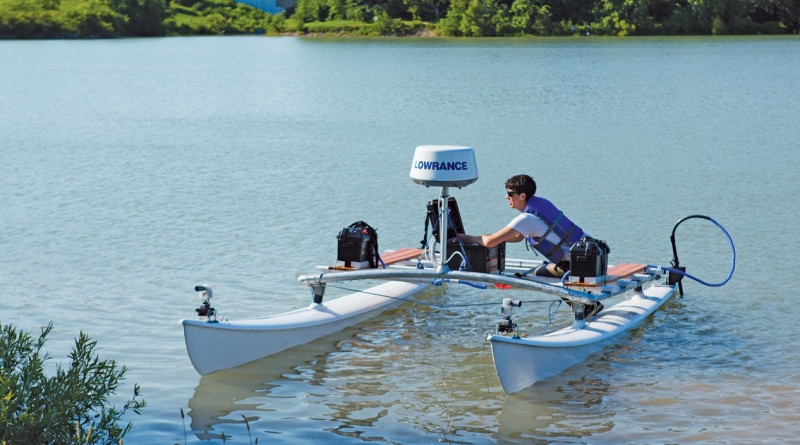Students attempt to bring driverless technology to recreational boating
BUFFALO, N.Y. — A yacht that can pilot itself? This is the goal of three University of Buffalo engineering students who are making strides toward developing technology to create autonomous boats that would take the captain out of the wheelhouse.
According to the University of Buffalo News Center, the Buffalo Automation Group, the cohort responsible for developing the technology, has successfully tested its system on a 16-foot catamaran, filed two provisional patent applications and secured funding.
“The success we’ve had illustrates there is a market for safe, highly-effective and easy-to-use marine autopilot systems that provide recreational boat owners with well-deserved peace of mind,” said Thiru Vikram, the company’s CEO, who expects to earn a computer science degree from University of Buffalo this spring.
Co-founders include Shane Nolan, chief operating officer (electrical engineering, class of 2017) and Alex Zhitelzeyf, vice president of product development (mechanical engineering, class of 2016).
With intent to help pleasure boaters, the company is targeting small yachts and boats up to 40 feet in length.
“These are vessels that are big enough for a family to spend anywhere from a few days to a few weeks on the water. But they’re often too small to hire a crew, or even a junior captain, so the captain must keep constant vigil over the boat,” Nolan said.
The problem with an autopilot system, Zhitelzeyf said, is the systems are reactive. The technology the group is developing – a combination of sensors, cameras and wireless communication systems – is predictive, fusing real-time data such as weather conditions and obstacles in the water with nautical charts and other static information to preempt any threats to the boat and its course of direction, according to the news release.
The system would dock the boat and allow the captain to take control over the vessel at any time.
“Essentially, you will connect your smartphone or laptop to the system. From there, you use your device to tell the system where you’d like to go. It then guides the boat, from port to port, using the safest, most efficient route possible,” Zhitelzeyf says.
For more information, visit buffalo.edu.


